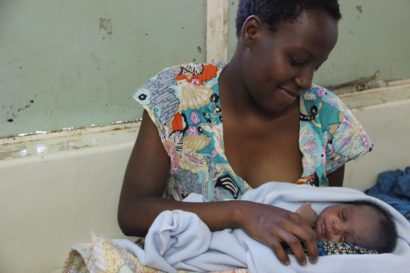 Maternal, Newborn and Child Health
Maternal, Newborn and Child Health
This rapid review focuses on identifying evidence and lessons learned on the links between life skills interventions in emergency settings and the prevention of unwanted pregnancies and early marriage and return to education post crisis amongst adolescent girls. It seeks to enable learning from past emergencies to inform the design of effective support to adolescent… Read more
The Safe Delivery App is a smartphone application that provides skilled birth attendants with direct and instant access to evidence-based and up-to-date clinical guidelines on Basic Emergency Obstetric and Neonatal Care. The App leverages the growing ubiquity of mobile phones to provide life-saving information and guidance through easy-to-understand animated instruction videos, action cards and drug… Read more
Roughly half of all mental health conditions start by the mid-teens, and three-quarters by the mid-twenties. Childhood and adolescence are key developmental stages when factors such as family, peers and school, as well as poverty, violence and other forms of adversity, can have lifelong consequences for mental health. At the same time, development interventions targeted… Read more
This blog, written by Alex Jones, originally appeared on the Oxford Policy Management website and is reposted with their permission. The answer to the question ‘would you rather give birth in 1900 or 2018’ might depend on where in the world you are. In 1900 in Sweden, before the construction of modern hospitals or the… Read more
Kenya has some of the highest rates of maternal and neonatal mortality in the world at 360/100,000 and 22/1,000 live births respectively. Translated into numbers – this equates to about 7000 maternal deaths and 29,000 neonatal deaths per year in Kenya. The DFID-funded Reducing Maternal and Neonatal Death in Kenya programme aims to reduce mortality… Read more
This resource provides an overview of the key issues in relation to Quality of Maternal and Newborn (MNH) Services, and signposts key resources for further reading. Originally designed for the cadre of Health Advisers at DFID, it has been adapted to suit a broad range of actors involved in strengthening policy and programming interventions. This resource has been collaboratively produced by… Read more
This annual review summary sheet captures the headlines on programme performance, agreed actions and learning over the course of the review period (2016/2017) for the Reducing Maternal and Neonatal Deaths in Kenya programme. The programme is implemented by three core partners: i) the Liverpool School of Tropical Medicine (LSTM) is scaling up training in Emergency… Read more
Growing attention on water, sanitation, and hygiene (WASH) and its links to infection prevention and control (IPC) is coming to the forefront of positive change in maternal and newborn health services in low- and middle-income countries. Joanna MacQueen, Junior Communications Officer at The Soapbox Collaborative, examines the importance of simple solutions. It should be no… Read more
This report focuses on the evidence on the health, economic and other benefits of investing in family planning. Family planning allows people to attain their desired number of children and determine the spacing of pregnancies. It is achieved through use of contraceptive methods and the treatment of infertility (WHO 2015). A large and growing body… Read more
The Reduction of Maternal and Neonatal Mortality Programme (MNH Programme) in Kenya aims to reduce delays in mothers and newborns receiving good maternity care. The three main problems the programme seeks to address are: 1) delay in decision to seek care; 2) delay in reaching care; and 3) delay in receiving care. The midterm evaluation… Read more
The Reduction of Maternal and Neonatal Mortality in Kenya programme supports a range of interventions to improve maternal and neonatal health (MNH) including training of health workers, health systems strengthening, community mobilisation, and demand generation. It is implemented in six counties with different sociodemographic contexts. A formal evaluation has been contracted with four components: 1)… Read more

 Maternal, Newborn and Child Health
Maternal, Newborn and Child Health








